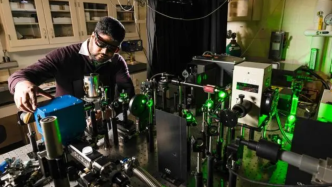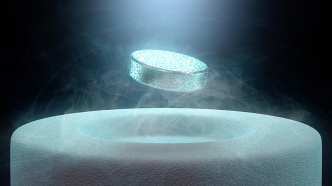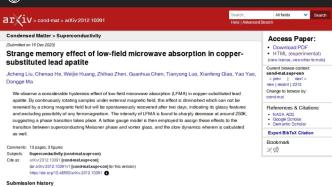
Recently, the team of Langa Dias from the University of Rochester in the United States claimed to have created a superconducting material that can work at 10,000 atmospheres and a room temperature of 21°C, a ternary compound of lutetium, nitrogen and hydrogen. This news quickly ignited the attention of the academic and industrial circles, and once brought about a surge in superconducting-related concept stocks. Some people excitedly declared that this was a revolutionary breakthrough, while others questioned its authenticity and thought it was the biggest scam of the century.
Is "room temperature superconductivity" a scientific breakthrough or a bragging farce? Judging from the information that has been made public so far, this breakthrough has received far more doubts than affirmation among industry peers, and the possibility of farce is relatively high.
This is not the first time that the Dias team has announced a breakthrough in "room temperature superconductivity". The team has a "previous record". In October 2020, the team published an article in the journal Nature, claiming that at a pressure of 2.6 million atmospheres, it successfully created a "room temperature superconducting" material with a critical temperature of about 15°C. This paper has been controversial, and the experimental results have not been successfully reproduced by peers. It was later withdrawn by the journal Nature. The editor believed that there were violations in the data processing.
In this breakthrough, the data of the Dias team is more beautiful, and superconductivity can be achieved at about 10,000 atmospheres and at room temperature of 21°C. However, recently, many experimental teams, such as Wen Haihu's team at Nanjing University, have quickly carried out verification and publicly released the results. They found that similar lutetium nitrogen-hydrogen materials were used, and their data were far from those of Dias's team's paper.
Reproducibility verification is the gold standard for judging the authenticity of a controversial scientific breakthrough. Among the peer verification experimental results that have been published so far, there are only doubts and no support, which is enough to make people put a big question mark on "room temperature superconductivity".
Of course, experiments that cannot be replicated are not completely equated with fake paintings. The experiment cannot be repeated, and there may be objective factors, such as too high technical difficulty of the experiment, unstable reagents, unstable experimental materials, and undisclosed key data. However, when the proportion of unrepeatable experiments is getting higher and higher, the subjective factors of academic misconduct will be highlighted, and the crisis of trust in scientific research results will also be inevitable. In 2016, the "Nature" magazine published the results of an online survey involving 1,576 researchers, and found that more than 70% of the researchers had tried to replicate other scientists' experiments and failed, and more than half of the researchers could not even repeat their own experiments. experiment.
How to improve the credibility of scientific research?
From the perspective of the capital market, investment institutions must be prudent and scientifically evaluate the progress of cutting-edge technology, and they should not tell stories, speculate on concepts, and wantonly consume the public's trust in technology. Modern scientific research often requires heavy investment, but large investment does not necessarily lead to big breakthroughs, and may also bring big deceptions. Last year, American entrepreneur Elizabeth Holmes was sentenced for fraud. The company she founded was valued at US$9 billion at its peak, but its core technology, "blood cancer test", was eventually proven to be a scam. "Room-temperature superconductivity" is also the favorite new technology in the capital market, which can produce disruptive applications and huge profits. Such lucrative benefits are enough to drive misbehaviors to take risks. The lessons learned from "Wolf is coming" time and time again tell us that in the face of hyped scientific breakthroughs, please keep calm and wait for verification.
From the perspective of the academic community, a more flexible error correction mechanism should be established. Scientific research must progress through continuous error correction, and taking the right incentives is conducive to quickly correcting errors. Research institutions and funding agencies should encourage researchers to conduct reproducible research and provide training, mentoring and funding for reproducible research. The evaluation system for scientific research personnel and scientific research achievements should include repeatability indicators, rather than simply relying on the number of papers and impact factors. Journal publishers should make the channels for disputes, corrections, and withdrawals more transparent and smooth, encourage academic contention through discussion and verification, and encourage researchers to correct mistakes in a timely manner.
A man cannot stand without faith, and a business cannot prosper without faith. The "room-temperature superconductivity" incident has highlighted the current crisis of trust in scientific research. To solve this crisis, it is necessary to curb academic misconduct from the source, in order to seek truth and pragmatism, and eliminate the pollution of fraud.


